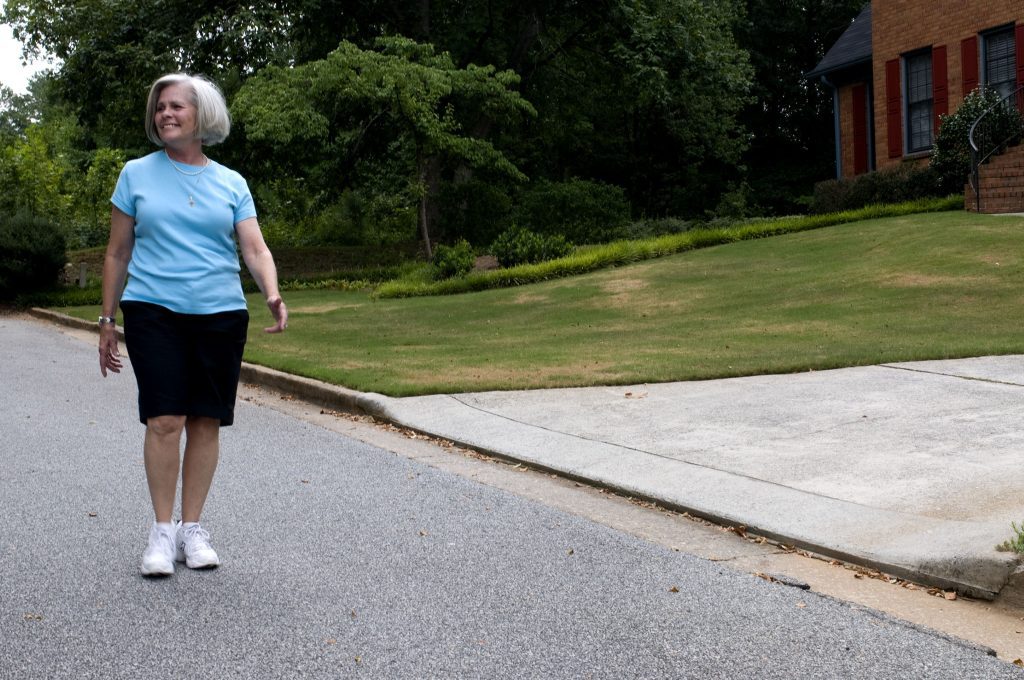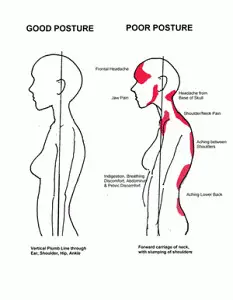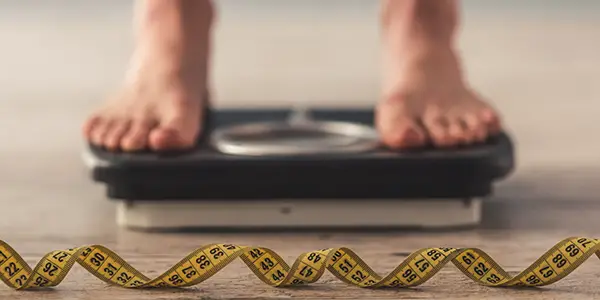If you’re like most people, you probably think of lower back pain as something that can only be treated by a doctor or physical therapist. But what if I told you that there are a few simple things you can do at home to get relief?
In this blog post, I’ll share some of the best lower back pain treatments that you can do yourself. From stretching to strengthening exercises, these techniques can provide significant relief. So if you’re dealing with lower back pain, read this article.
Contents
Just Keep Moving
A common misconception about lower back pain is that you should avoid movement and rest until the pain goes away. However, a new study from Emory University School of Medicine suggests that the opposite may be true: A brisk 30-minute walk may be the best way to ease back pain.
The study, published in the journal Spine, found that a walking program was more effective than either self-care education or physical therapy in reducing long-term pain and disability.

“There is this common misconception that if you have back pain, you should rest, but our study suggests that gentle motion may actually be better,” says lead author Salman Hemani, MD, assistant professor of physical medicine and rehabilitation at Emory University School of Medicine. “We think this may be because walking provides both exercise and education on how to move correctly, which can help ease pain and prevent future episodes.”
The study included 288 adults with chronic low back pain who were randomized to one of three groups: self-care education, physical therapy, or a walking program. All participants received an initial assessment and an educational booklet on self-care for lower back pain. They were then followed for six months.
At the end of the study, those in the walking group had significantly less disability and pain than those in the other two groups. They also reported greater satisfaction with their treatment.
“This study provides strong evidence that a simple intervention like a walking program can be an effective treatment for chronic low back pain,” says Hemani. “And it has the added benefit of being low-cost and easily accessible.”
If you’re dealing with chronic lower back pain, Hemani recommends talking to your doctor about starting a walking program. “It’s important to listen to your body and start slowly if you’re not used to exercising,” he says. “But even a little bit of activity can make a big difference.”
Stretch and Strengthen Often
Sitting too much weakens the muscles in your buttocks, hips, and legs, which can lead to or worsen lower back pain. To combat this problem, add some of these exercises to your routine—do them three times per week, and you’ll see a difference in your back pain within a few weeks. As always, check with your doctor before starting any new exercise routine.

Stretching:
Stretching is an important part of any fitness routine, but it’s especially important if you have lower back pain. Stretching loosens up tight muscles, improves the range of motion in your joints, and can help alleviate pain. static stretches—ones in which you don’t move—are best for people with lower back pain.
Abdominal core:
The first thing most people think of when they hear “core work” is six-pack abs. But strong abdominal muscles are important for more than just looking good at the beach—they also support your spine and help keep your lower back healthy. There are a number of different exercises you can do to strengthen your core, but one of the best is the classic sit-up. Just be sure to do them slowly and with good form to avoid putting too much strain on your lower back.
Tai chi:
Tai chi is a gentle form of martial arts that is often used for its health benefits. Studies have shown that tai chi can be helpful for people with chronic pain conditions like lower back pain. Tai chi is low-impact and puts very little strain on your joints—so it’s a good option if you’re not up for more vigorous forms of exercise.
Always Keep a Good Posture
 One of the best things you can do for your lower back is to keep a good posture. When you’re sitting at a computer, make sure your eyes are level with the top of the screen. Use a chair that supports your back and place a pillow or towel behind your lower back. If you have to sit for long periods of time, get up and walk around every few hours.
One of the best things you can do for your lower back is to keep a good posture. When you’re sitting at a computer, make sure your eyes are level with the top of the screen. Use a chair that supports your back and place a pillow or towel behind your lower back. If you have to sit for long periods of time, get up and walk around every few hours.
When you’re standing, keep your shoulders relaxed and your chin up. Let your arms hang down at your sides. Tuck in your pelvis so that you’re not sticking your butt out. If you have to stand for long periods of time, put one foot on a low stool or box to take some of the load off your back.
Whenever you can, avoid bending forward at the waist. Instead, squat down or bend at the knees and hips. If you have to lift something heavy, lift with your legs, not your back. And when you sneeze or cough, support your back with one hand while you do it.
Try to Maintain a Healthy Weight

If you are carrying around extra pounds, shedding some weight may help to reduce the load on your spine and relieve your lower back pain. Check with your doctor first to get started on an exercise plan that is right for you, and be sure to include aerobic activities and strength training to help maintain a healthy weight.
Quit Smoking for Better Health
Smoking is one of the worst things you can do for degenerative disk disease and other spine problems. It depletes vital nutrients, damages spongy disks, and weakens spinal bones. Even if you don’t have spine problems now, smoking dramatically increases your risk of developing them later.

The best way to protect your spine is to quit smoking and avoid all tobacco products. This will help keep your joints healthy and improve your overall health. research shows that smokers are more likely than nonsmokers to develop disk herniations and other serious spine problems.
If you’re struggling to quit smoking, talk to your doctor about ways to make it easier. There are many resources available to help you kick the habit for good. In the meantime, try to avoid secondhand smoke as much as possible.
Try Using Ice and/or Heat
There is a long debate over which is better for back pain, ice or heat. The short answer is that it depends on what’s causing your pain.
If your pain is due to tight muscles, then heat may be the best option. Heat treatment relaxes muscles and can increase blood flow to the area, which helps reduce inflammation. You can use a heating pad, take a hot bath, or use a muscle-ache cream that contains menthol or capsaicin.
If your pain is due to inflammation, then ice may be the best option. Ice constricts blood vessels and can help reduce swelling. It’s also numbing, so it can help relieve pain. You can use an ice pack, wrap ice in a towel, or put crushed ice in a plastic bag.
The best option is to alternate between ice and heat. Start with ice for 20 minutes, then switch to heat for 20 minutes. Repeat this cycle for 30-60 minutes as needed.
Learn More About OTC Medications
There are two main types of over-the-counter (OTC) medications that can help relieve lower back pain: nonsteroidal anti-inflammatory drugs (NSAIDs) and pain relievers. NSAIDs work by lowering inflammation, while pain relievers work by blocking pain signals.

There are several different types of NSAIDs, and they are available in both pill and gel form. The most common NSAIDs are ibuprofen (Advil, Motrin), naproxen (Aleve), and ketoprofen (Orudis). These medications can be effective for both acute (short-term) and chronic (long-term) inflammatory conditions.
Acetaminophen is the most common type of pain reliever. It is best known by the brand names Tylenol, Excedrin, and Anacin. Acetaminophen relieves pain by blocking pain signals from the brain. It is effective for both acute and chronic pain, but it does not reduce inflammation as NSAIDs do.
Aspirin is another type of pain reliever that can be used to treat lower back pain. However, aspirin has side effects that make it a less desirable choice for some people, such as gastrointestinal bleeding and kidney damage. Aspirin should not be used if you have an allergy to it or if you have a history of ulcers or gastrointestinal bleeding.
Use Medicated Creams
There are many things you can do at home to find significant relief from lower back pain. Medicated skin creams, salves, and patches can provide targeted relief to the affected area. These treatments often contain ingredients like menthol or capsaicin, which work by distracting your nervous system from the pain signals it’s receiving.
You can also use heating pads and ice packs to find relief. Place a heating pad on your back for 20-30 minutes at a time, several times a day. Or alternate between using a heating pad and an ice pack for 20-30 minutes at a time. The heat will help relax your muscles, while the cold will help reduce inflammation.
There are also some simple stretches and exercises you can do at home to ease lower back pain. Try doing these stretches and exercises several times a day to see the best results.
Learn More About Supplements
In recent years, supplements have become increasingly popular as a means of improving overall health and treating specific conditions. According to the Mayo Clinic, “many people take supplements because they hope to gain a health benefit.”
However, it’s important to talk to your doctor before taking any supplements, as they can interact with medications you may be taking and cause other problems.
Some common supplements include vitamins, minerals, herbs, and botanicals. Vitamin D and calcium are two nutrients that are important for bone health. Many people don’t get enough vitamin D from exposure to sunlight or from their diet, and this can lead to a magnesium deficiency. A magnesium deficiency can cause muscle weakness, difficulty with breathing, and an irregular heartbeat.
While there are many benefits to taking supplements, it’s important to remember that they should not be used as a replacement for a healthy diet. Eating a variety of healthy foods is the best way to ensure you’re getting all the nutrients your body needs.
Frequently Asked Questions
What is the fastest way to cure lower back pain?
Depending on the underlying cause of the pain, there are a number of different treatment options that may be effective. Treatment options may include pain medication, physical therapy, massage, acupuncture, and/or chiropractic care.
How can I relieve lower back pain at home?
There are many ways to relieve lower back pain at home. Some people find relief by using a heating pad or ice pack on the affected area. Others find relief by taking over-the-counter pain medication such as ibuprofen or acetaminophen. Additionally, some people find relief by performing gentle stretches or exercises specifically designed to relieve lower back pain.
What relieves lower back pain?
There are many ways to relieve lower back pain. Some people find relief with over-the-counter medication, while others find relief with heat or ice packs. There are also many different exercises that can help to relieve lower back pain.
back pain, home remedies, pain breakthrough, pain relief, many people, pain treatment, muscle pain, physical therapy, heating pad, chronic pain, proteolytic enzymes, spinal nerve, national institute, effective home remedies, common causes, few days, spinal column, blood flow, medical advice, physical therapist, tight muscles, pain relievers, back muscles, high heels, clinical trials, poor posture, ice packs, neurological disorders, great way, back injury, Advil, knee, back pain, physical therapist, diagnosed, hips, herniated, backache, sports medicine, physical exam, herniated discs, medicine, bulging disc, specialists, sciatica, a nonsteroidal anti-inflammatory drug, pilates, acute back pain, psoas muscles, pelvis, NSAIDs
Summary
Lower back pain is a very common health issue that affects people of all ages. The good news is that there are a number of things you can do to treat lower back pain at home.
Nonsteroidal anti-inflammatory drugs (NSAIDs) like ibuprofen and naproxen are some of the most effective medications for treating lower back pain. Exercises like stretching and strengthening can also help relieve pain. If your pain is severe, you may need to see a healthcare professional for additional treatment.
In most cases, lower back pain can be treated at home with some simple lifestyle changes. Staying active and doing exercises to strengthen your back muscles can help relieve pain. You should also maintain a healthy diet and get enough sleep. Avoiding activities that put a strain on your back or make your pain worse can also help. If your pain persists, talk to your doctor about other treatment options.

James Nystrom is a leading researcher in the field of hip pain. He has spent his career studying the latest treatments and techniques for relieving hip pain, and he is known for his innovative approach to care. He is passionate about helping his patients find relief from their pain and improving their quality of life. He is also a huge fan of inversion therapy and all things related to health and well-being.

